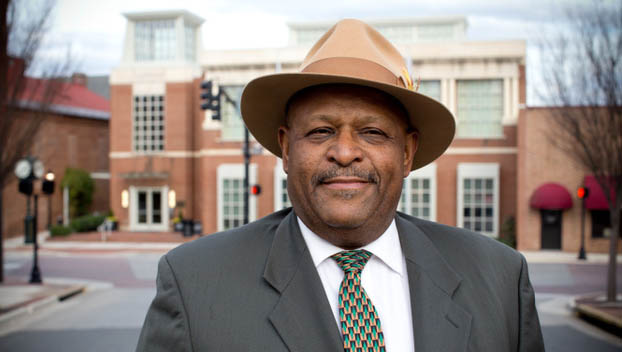School roof, courthouse design in Cumberland improvement plan
Published 10:30 am Thursday, May 1, 2025
|
Getting your Trinity Audio player ready...
|
Cumberland County staff have done everything possible to find funding for capital improvement projects. That’s something Cumberland Administrator Derek Stamey made clear to supervisors during their Tuesday, April 29 meeting. Cumberland has applied for more than $2.6 million in grants and to date, the county has collected $850,000.
Just as important as the funding is having a plan to choose which capital projects get priority or under what conditions some of them get funded. That’s what Cumberland supervisors approved Tuesday night, a capital improvement plan that had quite a few qualifiers attached. Before we go any farther, let’s underline that. These projects mentioned are priorities but most do not have any money attached to them right now. The majority are in a holding pattern of sorts, waiting to see if they get grant funding.
The one project that did have money set aside for it was the Cumberland Elementary roof replacement. The roof at Cumberland Elementary is from the original 1996 build. It’s labeled as a high priority, needing to be completed within the next two to three years. During Tuesday’s meeting, Stamey asked supervisors to set aside $450,000 out of the general fund to serve as seed money for the roof replacement. Again, not spending it now, but using it as the first part of savings, to be spent on the project.
“We recognize that’s a need,” Stamey said of the roof. “We’ve got a cost estimate of approximately $1.1 million and we want to go ahead and start setting aside money. We don’t want to get caught where we don’t have any.”
Supervisors agreed, unanimously voting to set aside the money.
Getting help for sheriff’s office
Also ranked as a priority is a request from the sheriff’s office. Back in March, Cumberland Sheriff Darrell Hodges asked for three vehicles for his deputies. That was to replace vehicles that have aged out or have high mileage.
In the past year, Cumberland staff have worked cooperatively with surrounding counties and towns to acquire used vehicles for the sheriff’s office at a significant discount. However, while that works as a temporary solution, it doesn’t as a full-time plan. And so, that was another priority agreed to on Tuesday, with one caveat. Instead of the three cars requested, the county can pay for two. Also, no money gets spent unless the county receives the grant staff has applied for.
Other priorities dependent on grant funding include a paving project at the Randolph transfer station, replacing the pump station generator and renovations at the county animal shelter.
Explaining the Cumberland capital improvement plan
Counties and towns develop capital improvement plans to set up a schedule of when work will be done on a number of issues. Officials list all of the needs and requests from the various departments and then those get narrowed down. The pieces the planning commission and supervisors deem as important get higher priority, while others get pushed back several years. The plan typically includes projects for the next 25 years, broken down into five year segments. Currently, Cumberland is working on the 2025-2030 segment, and looking to decide which of the requests should be moved up or pushed back.
And now, about the courthouse
And finally, we get to the proposed courthouse renovation. Much like they’re doing with the elementary school roof, Stamey is recommending that the county start setting money aside to pay for the courthouse architectural design. Specifically, he asked the supervisors’ permission to borrow $1.5 million to use as seed money for the design.
Now that will likely not be the final cost, he told supervisors on Tuesday.
“This is a placeholder,” Stamey said. “We do not have an up front estimate until we actively receive proposals from qualified firms.”
And as mentioned prior, that won’t happen anytime soon. The supervisors’ vote on Feb. 18 didn’t give authorization to approve any contracts or fund construction. Instead, it gave permission for a group of county staff to develop a request for proposals, which would then be made public. That request for proposals hasn’t been finished yet.
When it is released, that’s when firms would be able to submit their projections on what it would cost to move forward with designs and plans.
Stamey estimated this process could take between 12 to 16 months to produce a finished product in terms of design, which would then be brought back to the board of supervisors.






